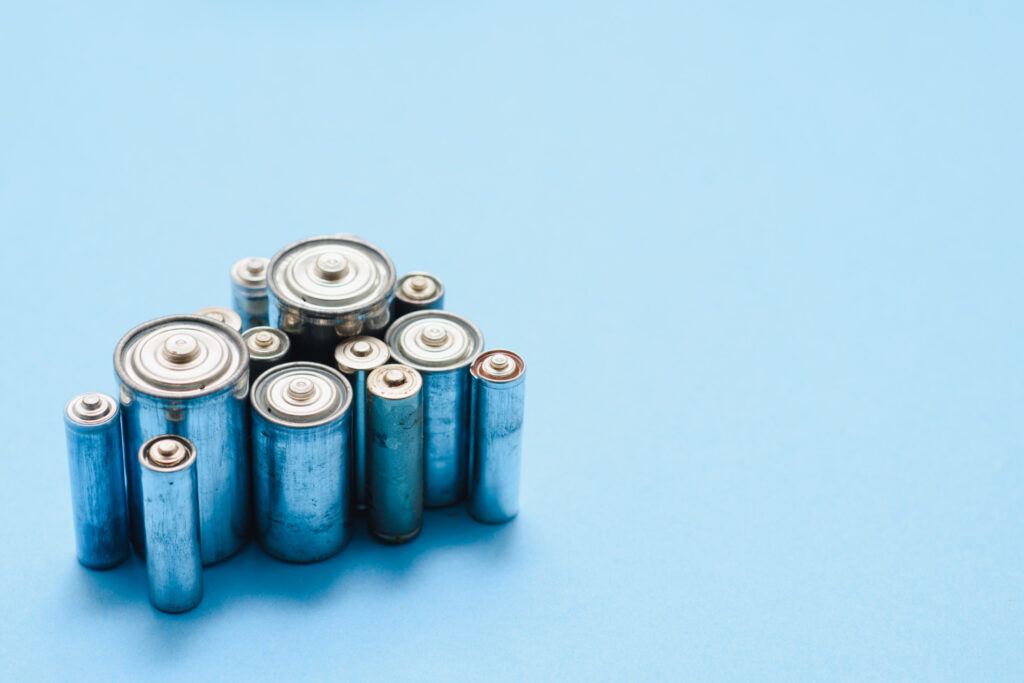Table of Contents
Before the development of lithium-ion batteries in the 1970s, lead-acid batteries were commonly used in various applications. However, lithium-ion batteries are gradually replacing lead-acid batteries due to their higher durability. The lithium-ion battery market is expected to experience a Compound Annual Growth Rate (CAGR) of 17.23% from 2022 to 2027.
This article compares and contrasts Lead-acid vs. lithium-ion batteries, including their characteristics and reusability.
Lead-Acid vs Lithium-Ion Batteries
The Materials Used
Both Lithium-ion and Lead-acid batteries function using the same fundamental principle. However, the materials used for the cathode, anode, and electrolyte differ. Lead-acid batteries use lead as the anode and lead oxide as the cathode, while lithium-ion batteries use carbon as the anode and lithium as the cathode. Furthermore, lead-acid batteries employ sulphuric acid as an electrolyte, whereas li-ion batteries use lithium salt. During discharge, ions travel from the anode to the cathode via the electrolyte, and the opposite process occurs during charging.
Cost
Lead-acid batteries are more economical and simpler to install than lithium-ion batteries. However, lithium-ion batteries are twice as costly as lead-acid batteries with equivalent capacity. Lithium-ion batteries last longer than lead-acid batteries, making them more cost-effective in the long run. Therefore, lead-acid batteries are more economical for short-term applications, while lithium-ion batteries are more effective for long-term applications.
Battery Capacity
Battery capacity refers to the amount of energy a battery can store per unit of volume. This capacity is directly related to the amount of active material inside the battery. It is worth noting that lithium batteries have a higher capacity than lead-acid batteries.
Energy Density or Specific Energy
Energy density is important when selecting a battery for a particular application. It represents the connection between the battery’s capacity and weight. The formula for calculating energy density is as follows:
Energy Density = (Nominal Battery Voltage (V) x Rated Battery Capacity (Ah)) ÷ Weight of Battery.
Lithium-ion (Li-ion) batteries have a higher specific energy than lead-acid batteries, making them ideal for electric vehicle (EV) applications.
Weight and Size
Lithium batteries have a higher energy density and capacity than lead-acid batteries, making them much lighter and smaller for the same capacity.
Depth of Discharge (DOD)
The Depth of Discharge (DOD) refers to the maximum energy you can use from a fully charged battery without recharging it. If you use more than this limit, it can negatively impact the battery’s lifespan. The DOD limit is 50% for lead-acid batteries and 80% for lithium batteries. This means that you can use lithium-ion batteries longer before needing a recharge. Some modern lithium batteries are even more efficient, with a DOD of 100%. So, it’s important to remember the DOD while using batteries to maximise their lifespan and efficiency.
Durability
The lifespan of a battery determines its durability. If a lead-acid battery is well maintained by recharging after 50% of the battery is utilised, it can last up to 2 years. However, if fully drained or above 80%, it can only sustain 350 cycles or one year. On the other hand, a lithium-ion battery has a warranty period of 10 years and can sustain 10,000 cycles.
Cycle Life
“Cycle life” refers to the number of times a battery can be charged and discharged without losing its performance. Lithium-ion batteries typically have a cycle life of 5000, which means they can undergo 5000 charging and discharging cycles without significantly impacting their performance. Lead-acid batteries have a shorter cycle life of 300 to 500 cycles, and their performance is significantly affected if they are fully discharged.
Charging Time
When it comes to charging batteries, Lithium-ion is the way to go. They are much faster than their lead-acid counterparts. While a lead-acid battery can take up to eight hours to charge, a Lithium-ion battery with the same capacity can be fully charged in less than two hours. This means Li-ion batteries charge eight times faster than lead-acid ones. That’s why Lithium-ion batteries are the preferred choice for most electric vehicles (EVs).
Safety
Batteries can fail for various reasons, so use high-voltage batteries cautiously. Overcharging can lead to an explosion in lead-acid and lithium-ion batteries. The sulfuric acid in the lead-acid battery is highly corrosive, and leakage is possible. Overcharging can generate hydrogen and oxygen gases, which can also cause an explosion. In the case of lithium-ion batteries, thermal runaway can occur, leading to a blast. The BMS engineer must build robust battery pack systems to minimise the risk of failure. CATL, Panasonic Corporation, Clarios, and Bharat Power Solutions are key players in battery manufacturing. The battery market is classified according to usage, such as automotive, aerospace, energy storage, solar, military, and defence, and each sector has safety guidelines.
Determine the application to compare lead-acid vs. lithium-ion batteries. Lithium-ion batteries are ideal for EVs and long-lasting power supplies, while lead-acid batteries are cost-effective for power backup applications such as UPSs for computers and inverters. A BMS engineer must compare lead-acid and lithium-ion batteries for each application to determine the best option.
The battery market is expected to reach USD 90 billion by 2025. To develop a robust battery pack design for EVs, you must take a course in battery technology to acquire the necessary skills.

In summary
In conclusion, while lead-acid batteries offer a lower upfront cost, lithium-ion batteries reign supreme in almost every aspect. They boast higher capacity, longer lifespans, faster charging times, and better depth of discharge. Lithium-ion is the way to go if you’re looking for a battery solution for the long haul.
Ready to explore the potential of Lithium-ion batteries for your next project? Contact Renovar Labs today for expert battery technology consulting!
FAQ
- What are some downsides of lithium-ion batteries?
They can be pricier than lead-acid, have safety risks like fire if damaged, and their lifespan depends on usage.
- When might lead acid be a better choice?
Lead-acid batteries are cheaper upfront and work well for short-term applications where readily available options are preferred.
- What’s the biggest concern with lithium-ion batteries?
Thermal runaway, which is a potential fire or explosion if the battery is damaged.
- How long do lithium-ion batteries typically last?
They can last 3-10 years, depending on usage, with 1000-5000 charge cycles being common.
- Which battery is best for long-term storage?
Lithium-ion usually wins due to its longer overall lifespan and ability to discharge deeper without harm.
- Can I swap a lead-acid battery for lithium-ion?
Maybe! Check compatibility and charging system requirements before making the switch.
- What’s the next big thing in battery technology?
Solid-state batteries offer faster charging and improved safety but are still under development.
- What are the two advantages of lithium-ion batteries?
They offer high capacity, meaning they store more energy and have a longer lifespan than rechargeable batteries.
- Are lithium-ion batteries expensive?
Yes, they typically cost more upfront than lead-acid batteries. However, their longer lifespan can make them more cost-effective in the long run.


